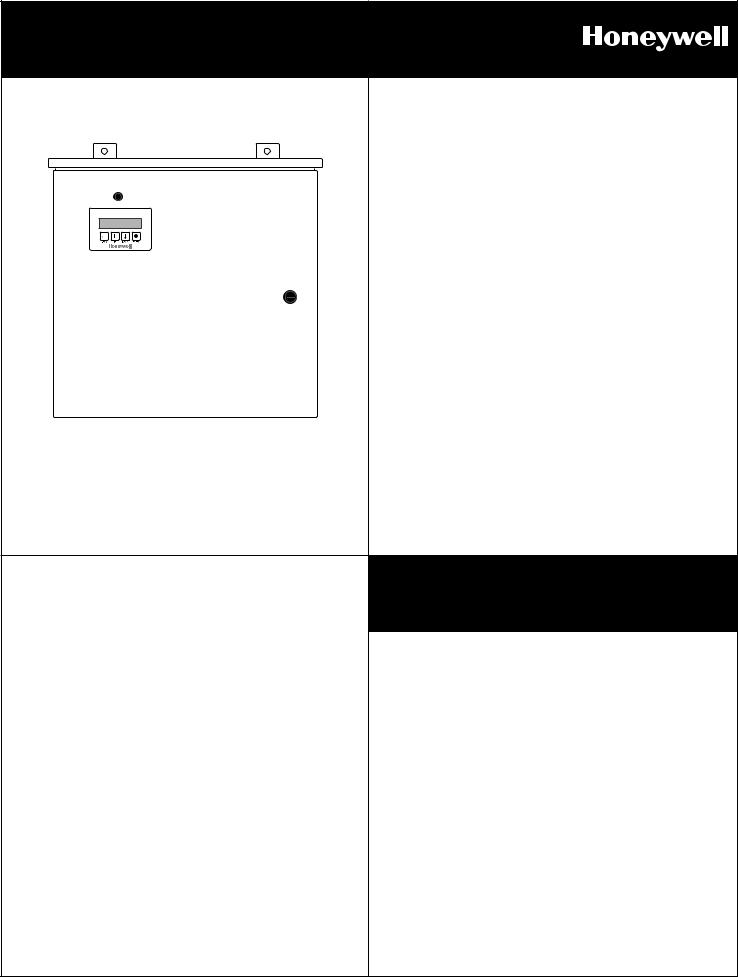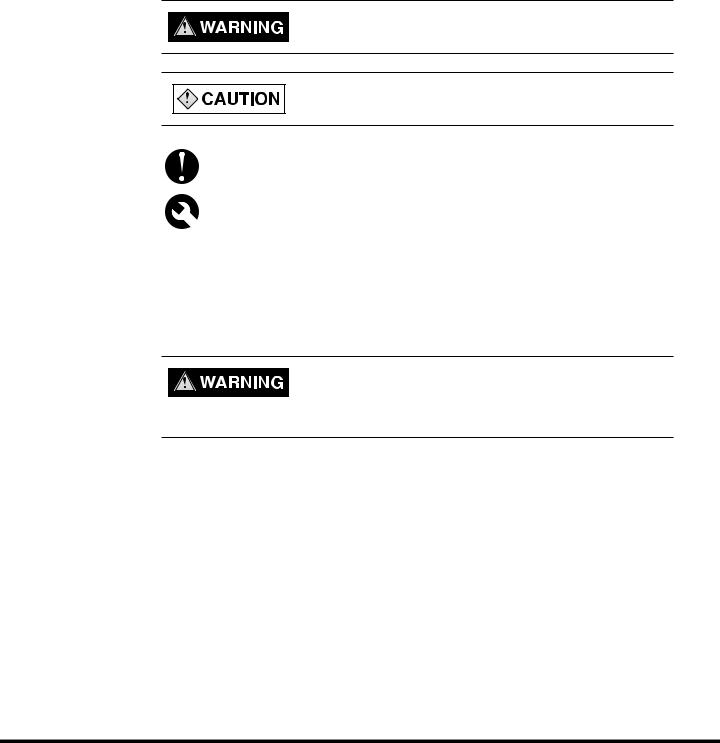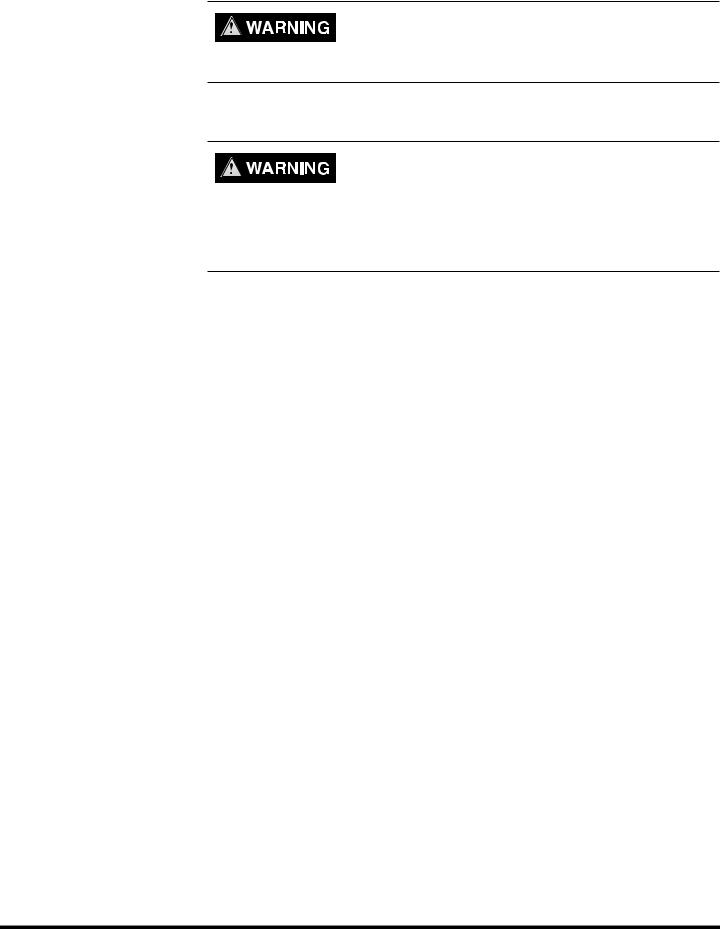Honeywell wt6500 User Manual

SMARTBOX™ CONTROLLER
for HONEYWELL™ Wind Turbine Model WT6500
Owner’s Manual
This manual is intended for the use of a licensed contractor. If you are a licensed and insured contractor who would like to become an Authorized Installer, please send your request to Installer@WindTronics.com.
The HONEYWELL™ trademark is used under license from Honeywell
International Inc.
Honeywell International Inc. makes no representations, or warranties with respect to this product or service.

II |
Safety Instructions |
|
|
|
|
Safety Instructions
PLEASE READ THESE INSTRUCTIONS AND THE ENTIRE MANUAL PRIOR TO INSTALLATION.
Safety Icons
The following symbols identify dangers associated with the installation, use or ownership of the SMARTBOX™ Controller. When you see these symbols, please be aware of the potential for personal injury or property damage.
WARNING indicates a hazard that could result in death, personal injury or property damage.
CAUTION indicates a hazard that could result in property damage.
IMPORTANT: PLEASE TAKE NOTE
PROFESSIONAL INSTALLATION: REQUIRED
 TIP: Helpful information to ease the installation
TIP: Helpful information to ease the installation
Important Safety Instructions
This manual contains important safety instructions that should be followed during the installation and maintenance of this product. Be sure to read, understand and save these safety instructions.
General Safety Instructions
•All electrical work must be done in accordance with all applicable local, national, and/or international electrical codes.
•Before installing or using this device, read all instructions and cautionary
markings located in (or on) this guide, the unit, the batteries, turbine and any other equipment used.
•This product is designed for indoor mounting only. Do not expose this unit to rain, snow or liquids of any type.
•To reduce the chance of short-circuits, use insulated tools when installing or working with the unit or any DC source (such as PV, hydro, wind, or batteries).
•Remove all jewelry when installing or working with the unit or any DC source. This will greatly reduce the chance of accidental exposure to live circuits.
•The unit contains more than one live circuit (batteries and turbine). Power may be present at more than one source.
•This product contains no user-serviceable parts.
SMARTBOX™ Controller for HONEYWELL™ Wind Turbine WT6500 Owner’s Manual - Rev14

Safety Instructions |
III |
|
|
|
|
LIMITATIONS ON USE
The SMARTBOX™ Controller is not intended for use in connection with life support systems or other medical equipment or devices.
Battery Safety Information
A battery can produce the following hazards to personal safety:
•electrical shock
•burn from high-short-circuit current
•fire or explosion from vented gasses
Observe proper precautions when working with or around batteries.
•Always wear eye protection, such as safety glasses, when working with batteries.
•Remove all jewelry before working with batteries.
•Never work alone. Have someone assist you with the installation or be close enough to come to your aid when working with batteries.
•Always use proper lifting techniques when handling batteries. Always use identical types of batteries.
•Never install old or untested batteries. Check each battery’s date code or label to ensure age and type.
•Batteries should be installed in a well-vented area to prevent the possible buildup of explosive gasses. If the batteries are installed inside an enclosure, vent its highest point to the outdoors.
•When installing batteries, allow at least 1 inch of air space between batteries to promote cooling and ventilation.
•NEVER smoke in the vicinity of a battery or generator.
•Always connect the batteries first, then connect the cables to the inverter or controller. This will greatly reduce the chance of spark in the vicinity of the batteries.
•Use insulated tools when working with batteries. When connecting batteries, always verify proper voltage and polarity. Do not short-circuit battery cables. Fire or explosion can occur.
•In the event of exposure to battery electrolyte, wash the area with soap and water.
If acid enters the eyes, flood them with running cold water for at least 15 minutes and get immediate medical attention.
•Always recycle old batteries. Contact your local recycling center for proper disposal information.
NOTE TO INSTALLER: This Owner’s Manual should be left with the owner of the
SMARTBOX™ Controller.
SMARTBOX™ Controller for HONEYWELL™ Wind Turbine WT6500 Owner’s Manual - Rev14

IV |
Safety Instructions |
|
|
|
|
The SMARTBOX™ Controller for the HONEYWELL™ Wind Turbine WT6500 is manufactured by WindTronics Inc. Please contact WindTronics Inc. at:
621 Sprucewood Avenue
Windsor, Ontario
N9C 0B3
877-946-3898
The Honeywell Trademark is used under license from Honeywell International Inc. Honeywell International Inc. makes no representations or warranties with respect to this product.
SMARTBOX™ Controller for HONEYWELL™ Wind Turbine WT6500 Owner’s Manual - Rev14

Safety Instructions |
V |
|
|
|
|
SMARTBOX™ Controller for HONEYWELL™ Wind Turbine WT6500 Owner’s Manual - Rev14

VI |
Table of Contents |
|
|
|
|
Table of Contents |
|
Safety Instructions....................................................... |
II |
1. Introduction |
|
The SMARTBOX™ Controller................................................... |
2 |
Major System Components.................................................... |
2 |
Parts Inspection................................................................... |
2 |
BatteryOverview..................................................................... |
3 |
Battery Types...................................................................... |
3 |
Amp-hour Ratings................................................................ |
4 |
Battery Selection.................................................................... |
4 |
AC Load Detail and Selection................................................ |
4 |
2. SMARTBOX™ Controller Installation |
|
System Diagrams................................................................... |
8 |
Turbine Block Diagram.......................................................... |
8 |
SMARTBOX Controller™ Diagram.......................................... |
9 |
Mounting................................................................................. |
9 |
Minimum Clearance for Proper Mounting.................................. |
10 |
Grounding............................................................................... |
11 |
Wiring...................................................................................... |
11 |
Wiring Diagram.................................................................... |
12 |
Turbine Wiring and Distances................................................. |
13 |
Turbine Current Rating and Wiring........................................... |
13 |
Turbine Over-current Protection.............................................. |
14 |
BatteryWiring...................................................................... |
15 |
Battery Over-current Protection............................................... |
16 |
AC Input Wiring................................................................... |
17 |
AC Output Wiring................................................................. |
17 |
AC Output Over-current Protection.......................................... |
18 |
Control Wiring..................................................................... |
19 |
Enclosure Internal Wiring....................................................... |
20 |
Battery Setup.......................................................................... |
20 |
Battery Setup Chart.............................................................. |
20 |
Connecting the SMARTBOX™ Controller............................. |
20 |
SMARTBOX™ Controller for HONEYWELL™ Wind Turbine WT6500 Owner’s Manual - Rev14

Table of Contents |
VII |
|
|
|
|
3. Commisioning |
|
Commissioning Process......................................................... |
24 |
4. Operation |
|
Introduction............................................................................. |
28 |
Turbine Operating States....................................................... |
28 |
Starting/Stopping Turbine....................................................... |
28 |
Viewing Operating Status....................................................... |
28 |
Controller Energy Consumption States..................................... |
29 |
Turbine Operating States....................................................... |
29 |
System Protection.................................................................. |
30 |
System Faults......................................................................... |
31 |
SMARTBOX™ Controller Front Panel................................... |
32 |
Navigation Buttons............................................................... |
32 |
System Menu and Navigation................................................. |
32 |
Operations Menu............................................................ |
32 |
Technician Menu............................................................ |
33 |
View Data Menu............................................................. |
34 |
Battery Setup Menu......................................................... |
35 |
5. Specifications |
|
Non Grid-tie SMARTBOX™ Electrical Specifications............ |
38 |
SMARTBOX™ Controller for HONEYWELL™ Wind Turbine WT6500 Owner’s Manual - Rev14

1 |
Introduction |
|
|
|
|
1 Introduction
Chapter 1 describes the SMARTBOX™ Controller with battery overview and selection details.
For Information On: |
See: |
The SMARTBOX™ Controller |
page 2 |
Battery Overview |
page 3 |
Battery Selection |
page 4 |
AC Load Detail and Selection |
page 4 |
SMARTBOX™ Controller for HONEYWELL™ Wind Turbine WT6500 Owner’s Manual - Rev14

Introduction |
2 |
|
|
|
|
The SMARTBOX™ Controller
The SMARTBOX™ Controller is a proprietary WindTronics control system that consists of a charge controller and a non-grid-tie 1.5 kW inverter. Included within the charge controller is an automatic AC transfer switch that will automatically switch between your AC grid and power generated via the turbine.
The DC output from the turbine is fed into the Junction Box located beneath the turbine assembly. The J Box serves three purposes: provide wiring interconnections for the installation, provide an output over voltage protection of 170 VDC, and provide a diversion or “dump” load that can dynamically brake and stop the turbine either upon request from the SMARTBOX™ Controller or if a failure occurs in the system.
Beyond the J Box, all connections are fed into the SMARTBOX™ Controller. The SMARTBOX™ Controller consists of four main elements: an I/O interface that provides wiring interconnect for installation, a charge controller to charge a bank of batteries, a non-grid-tie 1.5 kW inverter to back-convert the batteries to an AC output and a transfer switch that can switch between AC grid input and the internal inverter’s AC.
Major System Components
SMARTBOX™ Controller
Batteries and battery enclosure
Parts Inspection
Upon opening the shipping container, review all contents to ensure the contents have not been damaged during shipping and handling. Failure to properly inspect and verify damages prior to installation may result in voiding of the manufacturer warranty. If any turbine components appear to be damaged, please contact the WindTronics service department at the following:
WindTronics, Inc.
Service Department
621 Sprucewood
Windsor, ON N9C0B3
Canada
1-877-946-3898
SMARTBOX™ Controller for HONEYWELL™ Wind Turbine WT6500 Owner’s Manual - Rev14

3 |
Introduction |
|
|
|
|
Battery Overview
Battery Types
Batteries are classified in two different ways: by application (their use) and construction (how they are built). The major applications are automotive, marine and deep cycle. Deep cycle includes solar electric (PV), wind power, backup power and RV/boat “house” batteries.
The major construction types are flooded (or “wet”), gel and AGM (Absorbed Glass Mat). AGM batteries are also sometimes called “starved electrolyte” or “dry,” because the fiberglass mat is only 95% saturated with sulfuric acid and there is no excess liquid. Flooded batteries may be standard, with removable caps, or a so-called “maintenance free” type. All gelled batteries are sealed and a few are “valve regulated,” which means that a tiny valve keeps a slight positive pressure. Nearly all AGM batteries are sealed valve regulated (commonly referred to as Valve Regulated Lead-Acid or “VRLA”). Most valve regulated types are under some pressure - 1 to 4 psi at sea level.
Not to be used
Starting (sometimes called “SLI,” for starting, lighting, ignition) batteries are commonly used to start and run engines. Engine starters need a very large starting current for a very short time.
Starting batteries have a large number of thin plates for maximum surface area. The plates are composed of a lead “sponge,” similar in appearance to a very fine foam sponge. This creates a very large surface area, but if deep-cycled this sponge will quickly be consumed and fall to the bottom of the cells.
Automotive batteries will generally fail after 30-150 deep cycles if deep-cycled, while they may last for thousands of cycles with normal starting use (2-5% discharge).
Minimum to be used
Most marine batteries are usually actually a “hybrid” and fall between the starting and deep cycle batteries, while a few (Rolls-Surrette and Concorde, for example) are true deep cycle. In a hybrid type, the plates may be composed of lead sponge, but the material is coarser and heavier than that used in starting batteries. It is often hard to tell what you are getting in a “marine” battery, but most are a hybrid type. Hybrid types should not be discharged more than 50%.
Since starting batteries are usually rated as either cold cranking amps (or “CCA”) or marine cranking amps (or “MCA”), the same as cranking amps (or “CA”), any battery with the capacity shown in CA or MCA may not be a true deep cycle battery. It is sometimes hard to tell, as the terms “marine” and “deep cycle” are sometimes overused. CA and MCA ratings are at 32 degrees F, while CCA is at 0 degrees F.
Recommended
We only recommend using TWO-12V, 100Ah, flooded, deep cycle, marine grade batteries. Deep Cycle batteries are designed to be discharged down as much as 80% time after time, and have much thicker plates. The major difference between a true deep cycle battery and others is that the plates are SOLID Lead plates, not sponge.
SMARTBOX™ Controller for HONEYWELL™ Wind Turbine WT6500 Owner’s Manual - Rev14

Introduction |
4 |
|
|
|
|
The popular golf cart battery is generally a “semi” deep cycle - better than any starting battery, better than most marine, but not as good as a true deep cycle solid lead plate, such the L-16 or industrial type.
Amp-hour Ratings
All deep cycle batteries are rated in amp-hours. An amp-hour (Ah) is a unit of electric charge measurement, calculated by multiplying amps by hours. For example, if you have a device that pulls 20 amps, and you use it for 20 minutes, then the amp-hours used would be 20 (amps) multiplied by .333 (hours), or 6.67 Ah.
The accepted amp-hour rating time period for batteries used in wind electric and backup power systems (and for nearly all deep cycle batteries) is the “20 hour rate.” This means that a battery is discharged down to 10.5 volts over a 20 hour period while the total actual amp-hours it supplies is measured. Sometimes ratings at the 6 hour rate and 100 hour rate are also given for comparison and for different applications. The 6 hour rate is often used for industrial batteries, as that is a typical daily duty cycle. The 100 hour rate is sometimes used for determining battery capacity for long-term backup amp-hour requirements.
Battery Selection
Battery selection is one of the most important steps in the installation process. Not selecting the correct batteries will result in short battery life, constant charge and discharge cycles, and overheating of batteries which could result in serious damage to equipment, battery explosions or fire. The charge controller will prevent over-charging, although this must be set up correctly.
DO NOT use standard automotive (starting) batteries. While automotive batteries may last for thousands of cycles in normal starting use (2-5% discharge), they will generally fail after 30-150 cycles if used in a deep cycle application as with the HONEYWELL™
Wind Turbine, which will discharge batteries down to 50%. Any battery rated in CCA or
CA should not be used. Since some marine batteries are rated with CCA, care must be used when selecting a marine battery.
AC Load Detail and Selection
The non-grid-tie option requires the installation of AC sub panel. This means that the user must select certain loads and move them into a separate sub panel. The sub panel will always be provided with AC power from either the grid or the turbine when the batteries are charged. The SmartBox controls a transfer switch internally when the conditions are ready.
A critical decision to be made during installation is selecting which loads to run off of the sub panel. The first step is to measure the current in the sub panel. The second step is to determine which loads should be moved to the sub panel. The calculation is made by determining the appliances to be run off the sub panel, and adding up the listed wattage on each appliance. The total should be less than 1500W. The SMARTBOX™ Controller can handle most home appliances’ starting current. The limitation is 1750W for three minutes and 3000W for two seconds.
General rules to determine what should go on the sub panel:
•In general, avoid appliances in the kitchen and laundry room.
•Putting the furnace or refrigerator on the sub panel is okay, but be sure to total the “on” time wattage required by all appliances
SMARTBOX™ Controller for HONEYWELL™ Wind Turbine WT6500 Owner’s Manual - Rev14

5 |
Introduction |
|
|
|
|
•Water pumps can be add to the panel, but the pump must be rated at 120 VAC.
•Typically, 1500W can handle all the lighting and some appliances.
•You may want to mark wall plugs in the home to indicate that the plug is on wind turbine power instead of grid power.
The following are lists of various recommended and non-recommended appliances, and their typical power requirements:
Recommended Appliances
Appliance |
Wattage |
Notes |
|
Clock radio |
|
10 |
|
Electric blanket |
60 |
/ 100 |
Single/Double |
Fans: |
|
|
|
Ceiling |
65 - 175 |
|
|
Window |
55 - 250 |
|
|
Energy Star Furnace: |
|
|
|
NO AC |
100 - 750 |
200 for a 2500 sq/ft home |
|
Lights |
10 - 150 |
Add total wattage of each lights on panel |
|
Personal computer: |
|
|
|
CPU - awake / asleep |
120 / 30 |
|
|
Monitor - awake / asleep |
150 / 30 |
|
|
Laptop |
|
50 |
|
Radio (stereo) |
70 - 400 |
|
|
Televisions |
65 - 170 |
|
|
VCR/DVD |
17 - 25 |
|
|
Water pump |
250 - 1100 |
|
|
|
|
|
|
Figure 1.1 Recommended Appliances
NOT Recommended
•Air conditioner = 1000-3000
•Coffee maker = 900–1200
•Clothes washer = 350–500
•Clothes dryer = 1800–5000
•Dishwasher = 1200–2400 (using the drying feature greatly increases energy consumption)
•Dehumidifier = 785
•Hair dryer = 1200–1875
•Heater (portable) = 750–1500
•Clothes iron = 1000–1800
•Microwave oven = 750–1100
SMARTBOX™ Controller for HONEYWELL™ Wind Turbine WT6500 Owner’s Manual - Rev14

Introduction |
6 |
|
|
|
|
•Refrigerator (frost-free, 16 cubic feet) = 725
•Toaster = 800–1400
•Toaster oven = 1225
•Vacuum cleaner = 1000–1440
•Water heater (40 gallon) = 4500–5500
•Water bed (with heater, no cover) = 120–380
SMARTBOX™ Controller for HONEYWELL™ Wind Turbine WT6500 Owner’s Manual - Rev14

7 |
SMARTBOX Installation |
|
|
|
|
2 |
SMARTBOX™ Controller |
|||
Installation |
|
|
|
|
|
Chapter 2 provides details on installing the SMARTBOX™ Controller and |
|||
|
getting it ready for operation. |
|
|
|
|
For Information On: |
|
See: |
|
|
|
|
||
|
System Diagrams |
|
page 8 |
|
|
Mounting |
|
page 9 |
|
|
Grounding |
|
page 11 |
|
|
Wiring |
|
page 11 |
|
|
Battery Setup |
|
page 20 |
|
|
Connecting the SMARTBOX™ |
|
page 20 |
|
|
Controller |
|
|
|
SMARTBOX™ Controller for HONEYWELL™ Wind Turbine WT6500 Owner’s Manual - Rev14
